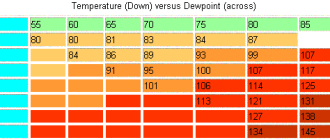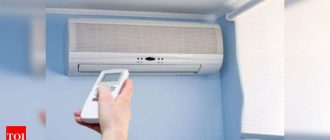
Is it okay to run split AC all day?
Many people wonder whether it is safe to run a split AC system all day long. It is a common question, as we rely on these appliances to keep us comfortable throughout the day, especially during hot summer months. While running a split AC system continuously may seem like a convenient option, there are both pros and cons to consider.
Pros: One of the main benefits of running a split AC all day is the consistent cooling it provides. By keeping the system on, the temperature inside your home remains constant, reducing the need for sudden bursts of cooling. Additionally, continuous operation can help remove excess humidity from the air, creating a healthier living environment.
Cons: On the other hand, running a split AC all day can lead to increased energy consumption, resulting in higher electricity bills. It is important to consider the energy efficiency of your AC system and the size of your space before deciding to leave it running continuously. Moreover, continuous use may also put additional strain on the equipment, potentially leading to more frequent breakdowns or the need for maintenance.
It is important to find a balance when deciding whether to run your split AC all day. Take into account factors such as the outside temperature, the size of your living space, and your comfort level. Consulting with a professional can help you make an informed decision and maximize the efficiency and lifespan of your AC system.
In conclusion, running a split AC all day can have both advantages and disadvantages. It is crucial to weigh these pros and cons and make a decision that suits your needs and circumstances. While continuous use can provide consistent cooling and humidity control, it may also result in higher energy consumption and potential equipment strain. Ultimately, finding the right balance is key to ensuring the optimal performance of your split AC system.
Advantages of running a split AC all day
Running a split AC all day has several advantages that can make it an appealing option for many homeowners:
1. Constant Comfort: By running a split AC all day, you can ensure a consistently comfortable indoor environment. The AC can maintain a desired temperature throughout the day, providing relief from the heat.
2. Energy Efficiency: While running an AC continuously may seem like it would consume more energy, split AC units are designed to be energy efficient. They are equipped with advanced technology that optimizes energy usage, helping to keep electricity bills under control.
3. Better Air Quality: A split AC can help improve indoor air quality by filtering out dust, pollen, and other airborne particles. Running the AC all day ensures that the air is constantly being filtered, creating a healthier living environment.
4. Noise Reduction: Split AC units tend to be quieter compared to other types of ACs. By running the AC all day, you can enjoy a peaceful and noise-free atmosphere in your home without any disruptions.
5. Protection of Furniture : A split AC helps to control the humidity level in your home, preventing excess moisture that can damage furniture. Running the AC continuously ensures that humidity is maintained at a comfortable level, protecting your valuable furniture from potential damage.
6. Flexibility: Running a split AC all day gives you the flexibility to come home to a cool and comfortable environment at any time. You don’t have to wait for the AC to cool down the space as it has been running continuously to maintain the desired temperature.
7. Improved Sleep: A cool and comfortable environment promotes better sleep quality. By running a split AC all day, you can create an ideal sleeping environment, ensuring a peaceful night’s sleep.
In summary, running a split AC all day can provide constant comfort, energy efficiency, improved air quality, noise reduction, protection of furniture, flexibility, and better sleep quality. However, it’s important to consider your specific needs and energy consumption when deciding whether to run the AC all day.
Disadvantages of running a split AC all day
While running a split AC all day may seem convenient, there are several disadvantages to consider:
- Increased energy consumption: Running a split AC continuously throughout the day can significantly increase your energy consumption and lead to higher electricity bills.
- Increased wear and tear: Continuous use of a split AC can lead to increased wear and tear on the system, which may result in more frequent repairs and maintenance.
- Poor indoor air quality: Keeping your split AC on all day can result in poor indoor air quality. The continuous operation can cause excessive dryness in the air, which can lead to dry skin and respiratory issues.
- Difficulty in sleeping: The constant operation of a split AC can create a noisy environment, making it difficult to sleep or concentrate on other tasks.
- Environmental impact: Running a split AC all day increases your carbon footprint and contributes to environmental degradation.
It is important to strike a balance between comfort and energy efficiency when deciding whether to run a split AC all day. Consider using programmable thermostats, adjusting the temperature settings, and utilizing natural ventilation to reduce the disadvantages associated with continuous use.
Potential energy savings with continuous use
Running a split AC all day can actually result in potential energy savings. While it may seem counterintuitive, continuous use of a split AC can help maintain a consistent temperature in a room or space, requiring less energy to cool down the room each time the AC is turned on.
When a split AC is turned on, it goes through a start-up phase where it uses more energy to cool down the room to the desired temperature. By keeping the AC running all day, the start-up phase is avoided, thereby reducing the overall energy consumption.
In addition, running a split AC all day can also prevent the room from becoming too hot or humid, which can lead to increased energy usage. By maintaining a consistent temperature, the AC doesn’t need to work as hard to cool down the room when it becomes too hot.
However, it’s important to note that running a split AC all day can also result in higher energy consumption if it is not used properly. It’s important to set the temperature at an appropriate level and avoid overcooling or overworking the AC unit.
In conclusion, running a split AC all day can potentially lead to energy savings by avoiding the start-up phase and maintaining a consistent temperature. However, it’s essential to use the AC unit efficiently to get the most out of its continuous use.
How continuous use affects the lifespan of a split AC
Is it okay to run a split AC all day? While continuous use of a split AC may provide comfort and convenience, it is important to consider its potential impact on the lifespan of the appliance.
Pros:
Running a split AC all day can ensure a consistently comfortable indoor temperature, especially during hot or humid weather. It can also help to reduce humidity levels, prevent the growth of mold and mildew, and provide better air quality.
Cons:
Continuous use of a split AC puts strain on the system and can contribute to premature wear and tear. This can lead to the need for more frequent servicing, repairs, and even early replacement of components. Extended usage may also result in increased energy consumption and higher utility bills.
Effects on lifespan:
The lifespan of a split AC can be affected by how frequently and for how long it is used. The more hours the unit operates each day, the faster its internal components may wear out. Additionally, running a split AC continuously without breaks for extended periods of time can lead to overheating and stress on the compressor and other vital parts.
However, with proper maintenance and regular servicing, the lifespan of a split AC can be extended. It is important to follow the manufacturer’s recommendations for cleaning, filter replacement, and preventative maintenance. Ensuring proper ventilation and allowing the unit to rest periodically can also help reduce the strain on the system.
In conclusion, while it may be tempting to run a split AC all day for maximum comfort, it is important to strike a balance between usage and its impact on the lifespan of the appliance. Regular maintenance, proper care, and occasional breaks can help ensure efficient operation and prolong the lifespan of the split AC.
Is continuous use beneficial for indoor air quality?
Running a split AC all day can have both positive and negative effects on indoor air quality.
- Pros:
- Continuous use of a split AC helps to maintain a consistent temperature and humidity level indoors, which can contribute to better air quality.
- By continuously cycling the air through the AC’s filters, it can help to trap and remove airborne particles, such as dust, pollen, and pet dander, improving indoor air quality.
- In areas with high levels of outdoor pollutants, running a split AC all day can help create a barrier by keeping the windows and doors closed, preventing outside pollutants from entering the indoor environment.
- Cons:
- Continuous use of a split AC can lead to dry indoor air, which can cause discomfort, especially for individuals with respiratory conditions or dry skin.
- If the AC unit is not properly maintained, continuous use can lead to the growth of mold and bacteria in the unit, which can negatively impact indoor air quality.
- Running a split AC all day can also increase energy consumption and utility costs, as the unit will be continuously running.
In conclusion, running a split AC all day can have benefits for indoor air quality, such as maintaining consistent temperature and humidity levels, and filtering out airborne particles. However, it is important to consider the potential drawbacks, such as dry air and the need for regular maintenance, as well as the increased energy consumption and costs.
The impact of continuous use on electricity bills
Running a split AC all day can have a significant impact on electricity bills. Split ACs are known to consume a lot of energy, especially if they are running continuously. While it may keep your home cool and comfortable, it can also lead to higher energy consumption and increased costs.
Split ACs work by cooling the air inside your home and expelling hot air outside. This process requires a considerable amount of energy, particularly when the AC is running non-stop. The longer the AC is on, the more energy it will consume, leading to higher electricity bills.
However, it is important to note that the impact on electricity bills will depend on various factors. These factors include the size of the AC unit, the energy efficiency rating, the temperature setting, and the overall energy usage in your home.
If you have a smaller split AC unit with a high energy efficiency rating, running it all day may not have as significant an impact on your electricity bills compared to a larger unit with a lower energy efficiency rating. Additionally, setting the temperature at a reasonable level and ensuring proper insulation in your home can help reduce energy consumption.
It is also worth considering the benefits of running a split AC all day. Continuous use can help maintain a consistent temperature and humidity level in your home, which can be beneficial for overall comfort. It can also prevent temperature fluctuations and minimize the time it takes to cool down a room when the AC is turned on after being switched off for a while.
Ultimately, whether running a split AC all day is okay or not depends on your individual circumstances. If you prioritize comfort and are willing to manage the potential increase in electricity bills, running a split AC all day may be acceptable. However, it is recommended to use the AC judiciously and consider energy-saving options to minimize the impact on your electricity bills.
| – Maintains consistent temperature and humidity level | – Increased energy consumption |
| – Prevents temperature fluctuations | – Higher electricity bills |
| – Quick cooling of rooms |
How continuous use affects noise levels
Is it okay to run a split AC all day? One important factor to consider when deciding whether to run your AC unit continuously is the noise level. Continuous use of a split AC can lead to an increase in noise levels, which may disrupt your daily activities and become a nuisance.
While split ACs are generally quieter compared to window units or portable ACs, they still produce noise during operation. The noise comes from various sources, including the compressor, fan motors, and airflow through the unit. With continuous use, these noise-generating components may become more noticeable and bothersome.
Furthermore, the noise level of a split AC can vary depending on the specific model and its maintenance. If the unit is not well-maintained or has loose parts, it may result in increased noise levels. Regular cleaning and servicing of the AC can help minimize noise and ensure optimal performance.
Continuous use of the split AC all day and night can disturb your sleep and relaxation. The constant noise from the unit may prevent you from getting a good night’s rest, resulting in sleep disturbances and fatigue. It is important to consider noise levels when deciding whether to run the AC continuously for an extended period.
In conclusion, while it may be okay to run a split AC all day, it is essential to be aware of the potential increase in noise levels that can occur with continuous use. Consider the specific model of your AC, its maintenance, and the impact of noise on your daily activities and overall comfort before making a decision.
Continuous use and its impact on humidity levels
When running a split AC all day, it is important to consider the impact it can have on humidity levels. Split AC units not only cool the air but also remove moisture, thereby reducing humidity levels indoors.
While this can be beneficial in hot and humid climates, continuous use of the AC can lead to excessively low humidity levels. Low humidity can cause discomfort, dry out your skin and mucous membranes, and even lead to respiratory problems. It can also damage wooden furniture, musical instruments, and other items sensitive to dry conditions.
To maintain a healthy humidity level while running the AC all day, you can:
- Monitor the humidity levels regularly using a hygrometer.
- Set the AC to a moderate temperature and humidity level to balance comfort and moisture removal.
- Consider using a humidifier in rooms that are frequently cooled by the AC to add moisture back into the air.
- Ensure proper ventilation in your home to allow fresh air circulation.
Overall, while it is generally okay to run a split AC all day, it is important to be mindful of the impact it can have on humidity levels. By monitoring and maintaining humidity levels, you can ensure a comfortable and healthy indoor environment.
The importance of proper maintenance with continuous use
When you choose to run your split AC all day, it is crucial to prioritize proper maintenance to ensure the system remains in good working condition. While it may be tempting to leave the AC running continuously, neglecting maintenance can lead to various issues that can compromise efficiency, performance, and even the lifespan of the unit.
Continuous use of a split AC means that it is constantly working to maintain a specific temperature, which puts a strain on its components. Without regular maintenance, the system can accumulate dust, debris, and other particles that can clog the filters and reduce airflow. This not only forces the AC to work harder to cool the room but also decreases its ability to effectively filter the air, potentially leading to poor indoor air quality.
Additionally, continuous use can cause wear and tear on vital components such as the compressor, evaporator coils, and condenser coils. Over time, this can result in decreased efficiency and increased energy consumption. Without proper maintenance, these issues may go unnoticed until they cause a complete breakdown of the system, leading to costly repairs or replacement.
To avoid these problems, it is essential to establish a regular maintenance routine for your split AC. This should include cleaning or replacing the filters regularly, inspecting and cleaning the coils, checking refrigerant levels, and ensuring proper airflow. It is also advisable to schedule professional maintenance at least once a year to address any potential issues and ensure optimal performance.
| – Consistent cooling throughout the day | – Increased energy consumption |
| – Reduced humidity levels | – Potential decrease in indoor air quality |
| – Instant relief from high temperatures | – Overworked components |
| – Avoiding the need to wait for the AC to cool the room | – Higher risk of breakdowns and costly repairs |
In conclusion, running a split AC all day may be okay, but it is crucial to prioritize proper maintenance to ensure efficient and reliable operation. Regular maintenance not only improves energy efficiency but also helps prolong the lifespan of the system, providing you with consistent cooling and comfort.
Can running a split AC continuously cause health issues?
Running a split AC continuously throughout the day is generally considered safe, but it may have potential health implications for some individuals. Here are a few factors to consider:
- Excessive dryness: Continuous use of a split AC can lead to excessive dryness in the air, which can cause dry skin, dry throat, and dry eyes. This can be uncomfortable for individuals who are prone to dryness-related health issues or have pre-existing respiratory conditions.
- Poor air circulation: An extended period of running a split AC can result in poor air circulation, especially if the air conditioning unit is not properly maintained. Insufficient air circulation may contribute to the accumulation of allergens, dust, and other pollutants in the room, potentially triggering allergies or respiratory problems.
- Temperature sensitivity: Extended exposure to cold air from a split AC may affect individuals who are sensitive to temperature changes. It can lead to muscle stiffness, joint pain, and may even aggravate conditions like arthritis.
- Energy consumption: Running a split AC continuously can significantly increase energy consumption, leading to higher electricity bills and potential environmental impacts. Consequently, it is necessary to strike a balance between comfort and energy-efficiency.
It is important to note that the above concerns may vary depending on individual health conditions and preferences. If you are experiencing any health issues or discomfort while running a split AC continuously, it is advisable to consult a medical professional or adjust the usage accordingly.
Continuous use and its effect on cooling efficiency
Is it okay to run a split AC all day? Many people wonder if it is safe and efficient to keep their split air conditioner running continuously throughout the day. While modern split AC units are designed to handle long hours of operation, there are pros and cons to consider when it comes to continuous use.
Running a split AC all day can provide a consistent and comfortable indoor temperature. It can cool down a room quickly and maintain a desired temperature without having to constantly adjust the settings. This can be particularly beneficial during hot and humid days when a cool environment is essential for comfort and productivity.
However, continuous use of a split AC can also have some drawbacks. One of the main concerns is energy efficiency. Keeping the unit running constantly can lead to higher energy consumption, resulting in increased electricity bills. It is important to strike a balance between comfort and cost-effectiveness by setting the AC to turn off or adjust its temperature when the room is not in use.
In addition to higher energy consumption, running a split AC all day can put more strain on the system, potentially leading to wear and tear. Regular maintenance and cleaning are crucial to ensure optimal performance and extend the lifespan of the unit. It is recommended to schedule routine maintenance checks and clean the air filters regularly to maintain cooling efficiency.
To maximize cooling efficiency, it is advisable to use features such as timers and temperature settings. Setting the AC to turn on a few minutes before you enter a room can help reduce energy consumption while still maintaining a comfortable temperature. Utilizing features such as sleep mode, eco mode, and fan-only mode can also contribute to energy savings and cooling efficiency.
In conclusion, running a split AC all day can provide continuous comfort, but it is important to be mindful of its effect on cooling efficiency and energy consumption. Regular maintenance, proper use of settings, and finding a balance between comfort and cost-effectiveness are key to getting the most out of your split AC.
Frequent break downs and repairs due to continuous use
While it may be tempting to run a split AC all day to keep your room cool and comfortable, it is not always okay to do so. Continuous use can lead to frequent breakdowns and repairs, which can be quite inconvenient and costly.
When a split AC is run constantly without breaks, it puts a strain on its components and the overall system. The compressor, which is responsible for cooling the air, can overheat and become damaged. Other parts, such as the condenser and evaporator coils, can also suffer from wear and tear.
Continuous use without proper maintenance can also lead to an accumulation of dust and dirt in the system. This can clog the filters and reduce airflow, making the AC less efficient. It can also lead to the growth of mold and bacteria, which can be harmful to your health. Regular cleaning and servicing are essential to prevent these issues.
In addition, running a split AC all day can significantly increase your energy consumption and utility bills. ACs are designed to cycle on and off to maintain a constant temperature. Continuous operation disrupts this cycle and can cause the AC to work harder than necessary.
To avoid frequent break downs and repairs, it is advisable to give your split AC regular breaks. Set a temperature that is comfortable but not too cold and consider using a timer or programmable thermostat to regulate its operation. Additionally, make sure to schedule regular maintenance and cleaning to keep your AC running smoothly.
Ultimately, while it may be tempting to run a split AC all day, it is important to consider the potential drawbacks and take steps to minimize them. By using your AC responsibly and taking proper care of it, you can enjoy the benefits of a cool and comfortable space while avoiding unnecessary repairs and expenses.
Factors to consider before running a split AC all day
Running a split AC unit all day can provide constant cool air and maintain a comfortable indoor temperature, but there are several factors to consider before deciding if it is okay to do so.
1. Energy consumption: Running a split AC unit all day can significantly increase energy consumption, leading to higher electricity bills. It is important to consider the impact on your budget and the environment before opting for continuous use.
2. System maintenance: Continuous use of a split AC unit can put a strain on its components, leading to more frequent wear and tear. Regular maintenance, such as cleaning filters and coils, is necessary to ensure optimal performance and prevent potential breakdowns.
3. Noise level: Split AC units can generate noise, especially when operating for extended periods. Consider the noise level and its impact on your comfort, especially if you need a quiet environment for work or sleep.
4. Temperature control: Running a split AC all day may lead to overcooling or insufficient cooling, depending on the settings and the outdoor temperature. Adjusting the temperature and fan settings appropriately can help maintain a comfortable indoor environment.
It is essential to weigh the pros and cons of continuous split AC use, considering energy consumption, system maintenance, noise level, and temperature control. Consult with a professional if you are unsure whether running a split AC all day is suitable for your specific situation.
Alternatives to continuous use of a split AC
Running a split AC all day may not always be the most energy-efficient or cost-effective option. Fortunately, there are some alternatives to consider that can help you reduce your reliance on continuous AC use.
| 1. Natural ventilation | Open windows and doors to let in fresh air, especially during cooler times of the day or evening. This can help create a natural breeze and reduce the need for AC. Consider using window screens to keep out insects and maintain security. |
| 2. Ceiling fans | Install or use ceiling fans to circulate air and create a cooling effect in the room. Ceiling fans can be more energy-efficient than running an AC all day, and they can help lower your electricity bills. Just remember to turn them off when you leave the room. |
| 3. Insulation | Ensure your home is properly insulated to prevent heat transfer from outside. This can help maintain a comfortable indoor temperature without excessive reliance on AC. Insulating walls, ceilings, and windows can help keep cool air in and hot air out. |
| 4. Shade and curtains | Use curtains, blinds, or shades to block sunlight and heat from entering your home. This can help keep your rooms cooler and reduce the need for AC. Consider using light-colored curtains or blinds that reflect heat. |
| 5. Programmable thermostats | Invest in a programmable thermostat that allows you to set different temperature levels throughout the day. This way, you can reduce AC usage during times when you are not at home or during cooler periods of the day. |
| 6. Proper maintenance | Ensure your split AC system is properly maintained to perform optimally. Clean or replace air filters regularly and schedule professional servicing to keep the system running efficiently. This can help prolong the life of your AC and reduce the need for continuous use. |
By considering these alternatives, you can reduce your reliance on continuous AC use while still maintaining a comfortable indoor environment. Experiment with different strategies to find the best balance between energy efficiency, comfort, and cost savings for your specific needs.
Q&A:
Can I leave my split AC running all day?
Yes, you can leave your split AC running all day if you want to maintain a cool and comfortable environment in your home. However, there are both pros and cons to continuous AC usage that you should consider.
What are the advantages of running a split AC all day?
Running a split AC all day can help maintain a consistent and comfortable temperature in your home, especially during hot summer days. It can also help reduce humidity levels, improve indoor air quality, and prevent the growth of mold and mildew. Additionally, continuous AC usage can prevent drastic temperature fluctuations, which can be especially beneficial for people with certain medical conditions.
Are there any disadvantages to running a split AC all day?
Yes, there are some disadvantages to running a split AC all day. Continuous AC usage can lead to higher electricity bills, as the AC unit will be consuming energy constantly. It can also put additional strain on the AC system, potentially leading to increased wear and tear and the need for more frequent maintenance. Furthermore, some people may experience health issues such as dryness of the skin and respiratory problems due to prolonged exposure to cool air.
Is it more energy-efficient to turn off the split AC when not in use?
Yes, it is generally more energy-efficient to turn off the split AC when it is not in use. This allows the AC system to rest and consume less energy. However, if you live in a hot climate or prefer a cool indoor environment at all times, you may find it necessary to run the AC all day. In such cases, you can consider using energy-saving features or adjusting the temperature settings to minimize energy consumption.
Is it safe to run a split AC all day?
Yes, it is safe to run a split AC all day. Modern split AC units are designed to handle continuous usage without any harm. However, it is important to maintain and clean the AC regularly to ensure its optimal performance.






